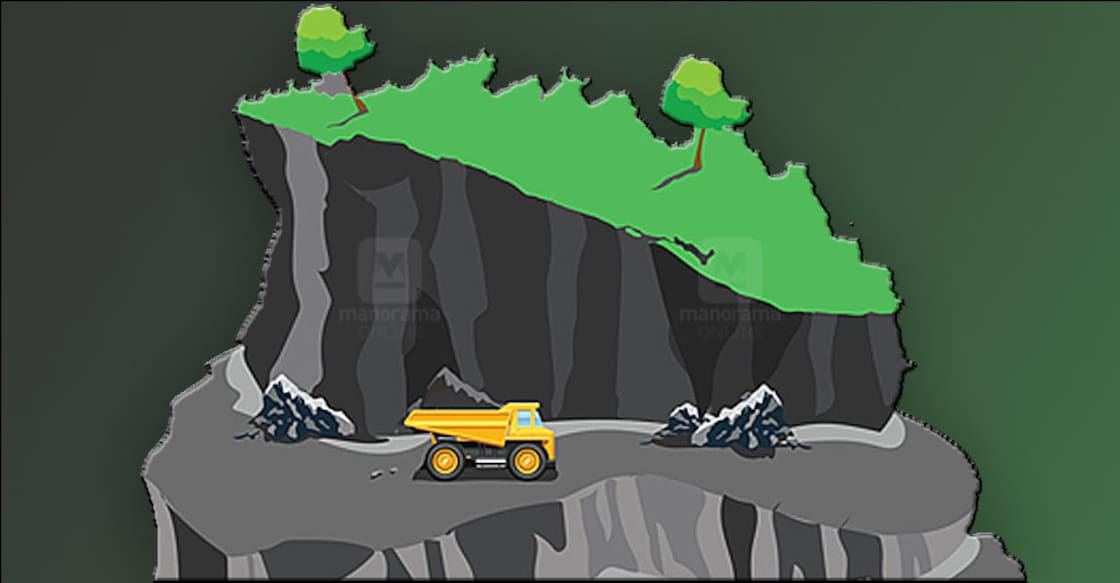Government to look the other way as shut quarries in ESZs to resume operations

Mail This Article
The 100-odd quarries within 10 kilometres of wildlife sanctuaries in Kerala that were asked to shut down last October are all set to resume operations by the beginning of March.
Last October, the Mining and Geology (M&G) Director K Biju had issued a stop memo to nearly 130 quarries that were within 10 km of the 28 wildlife sanctuaries in Kerala on the grounds that they did not have the approval of the National Board for Wildlife (NBWL). The Ministry of Environment and Forests (MoEF) has made a NBWL approval mandatory for quarries to function within 10 kms of a wildlife sanctuary boundary.
The quarry owners had gone in appeal against the stop memo issued by the M&G director. The High Court, in its order early January, said the quarries within 10 kms of forest sanctuaries required the NBWL's permission. However, the Court allowed the quarry owners to submit fresh applications before the NBWL and said that the quarries could be reopened if the Board fails to consider these applications within two months. The deadline ends this February and if the Board had not processed the applications by then, which now looks likely, the quarries can resume functioning from the first week of March.
In such an eventuality, the government could file an appeal before the division bench of the High Court. But in a move that clearly indicates where its heart lies, the LDF government has decided not to.
Unclear boundaries
The MoEF had in 2009 asked all states to fix ecologically sensitive zones (ESZ) around wildlife sanctuaries. Wherever the limits were not fixed, the MoEF had said the extent of the ESZ would be 10 kms by default. Kerala, like many other states, had failed to come up with a site-specific ESZ plan for each wildlife sanctuary fearing public backlash.
During the UDF tenure, a committee led by UDF MLAs T N Prathapan, V D Satheesan and N Samsudheen had recommended ESZs varying from 0.5 kms to 10 kms. The report, not surprisingly, was ignored. Finally, when the MoEF order was enforced in Kerala last September, the extent of ESZs was uniformly fixed as one kilometre.
However, the state can only recommend the extent of ESZs for sanctuaries within its ambit. The final notification has to come from the MoEF. In the case of Kerala, the MoEF has still not issued the ESZ notification. Meaning, the default 10-km ESZ remains valid. This also allowed the M&G director to issue stop memos to all quarries within the 10 km radius of sanctuary's boundary.
Optimising the functioning of quarries was seen as a necessity after the back-to-back floods that devastated Kerala. In August 12, 2019, after the second flood struck Kerala, the State government had stopped the operations of 895 quarries across the state until further notice. The blanket ban was revoked after a while but the stop memo to nearly 130 quarries within 10 kilometres of sanctuaries in October was in tune with the government's promise to lessen nature's hurt.
Miners' paradise
But the LDF government had consistently favoured the interests of the mining lobby over the concerns of nature. In 2017, the LDF government had halved the distance a quarry has to keep from roads, canals, rivers, and residential buildings to 50 metres from 100 metres. Then in 2018, citing severe shortage of construction materials, the government has made it even more easy for quarry owners to get environment clearance.
Two changes made to expedite the grant of environment clearance are considered particularly ominous. One, the government has allowed quarries less than one hectare to present a “simplified mining plan”. The original Mining Plan imposes very stringent precautionary measures on quarry owners.
The other dilution is even more dangerous. The Kerala Minor Mineral Concession Rules had stipulated that the district collector's no-objection certificate was mandatory to mine ordinary clay. This has now been removed. In short, no questions will be asked if mining takes place in paddy lands. Ordinary clay in the state is mined mostly from paddy lands.
Then came the controversial decision to limit eco-sensitive zones to just one kilometre. Over 300 quarries were said to have been spared of any ecological burden.

